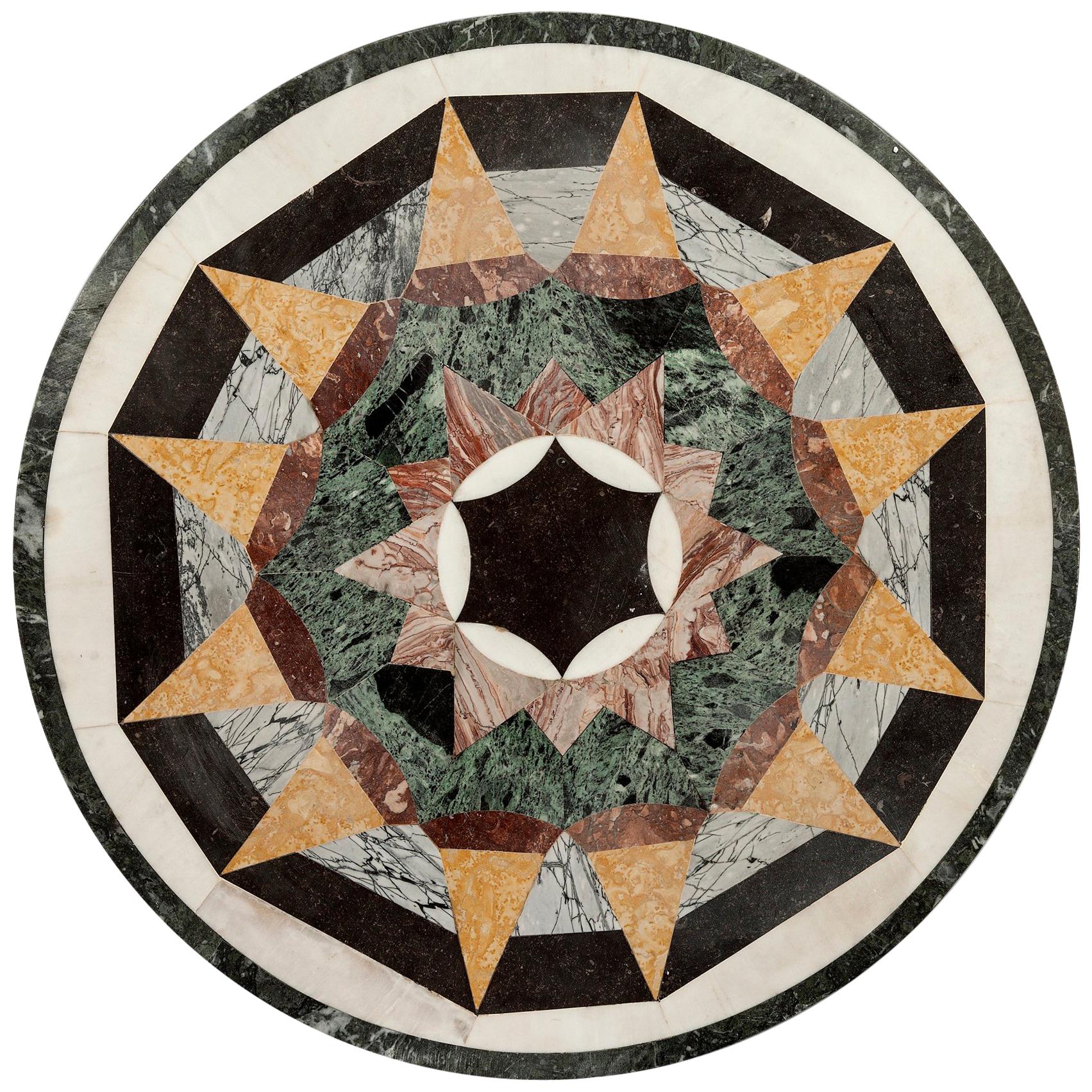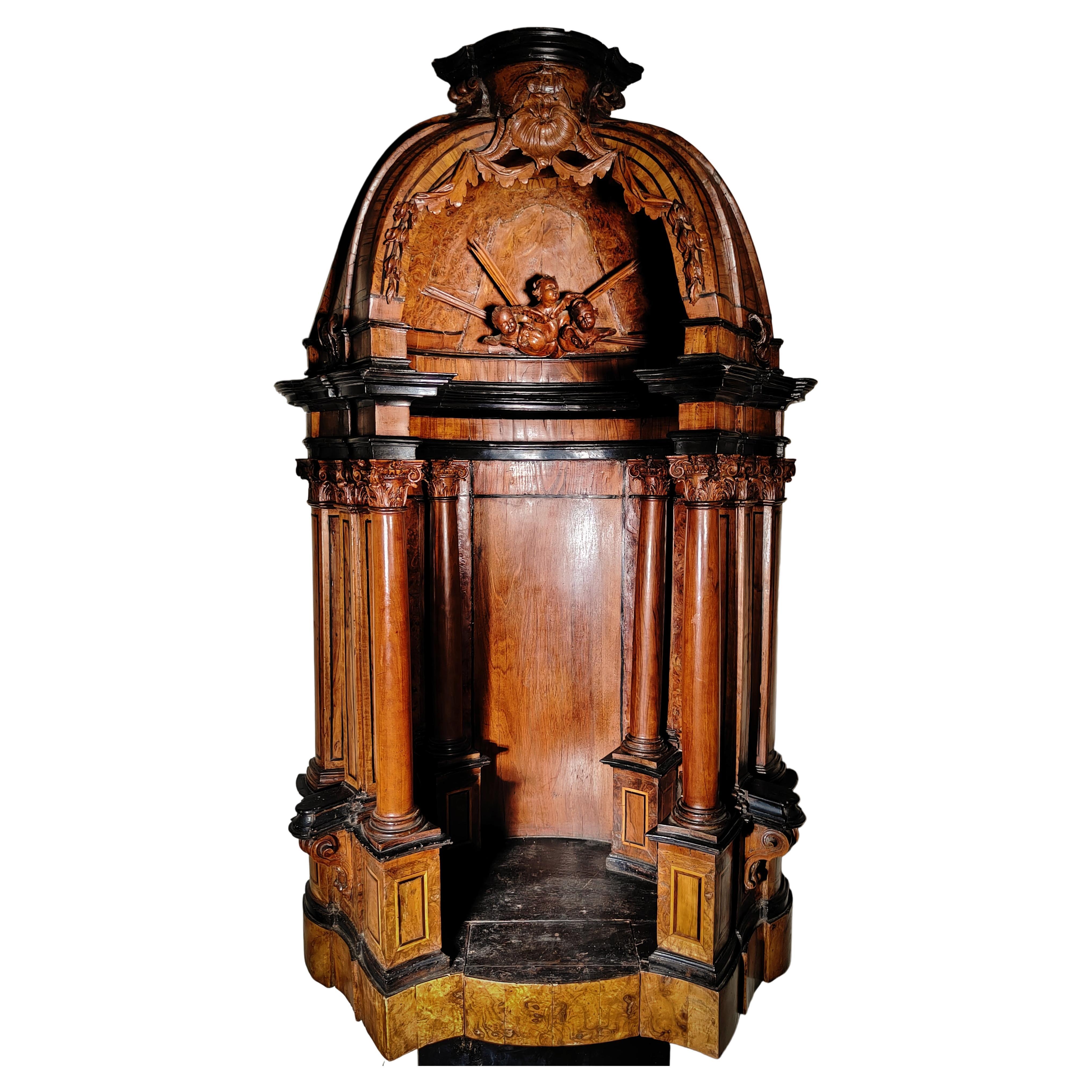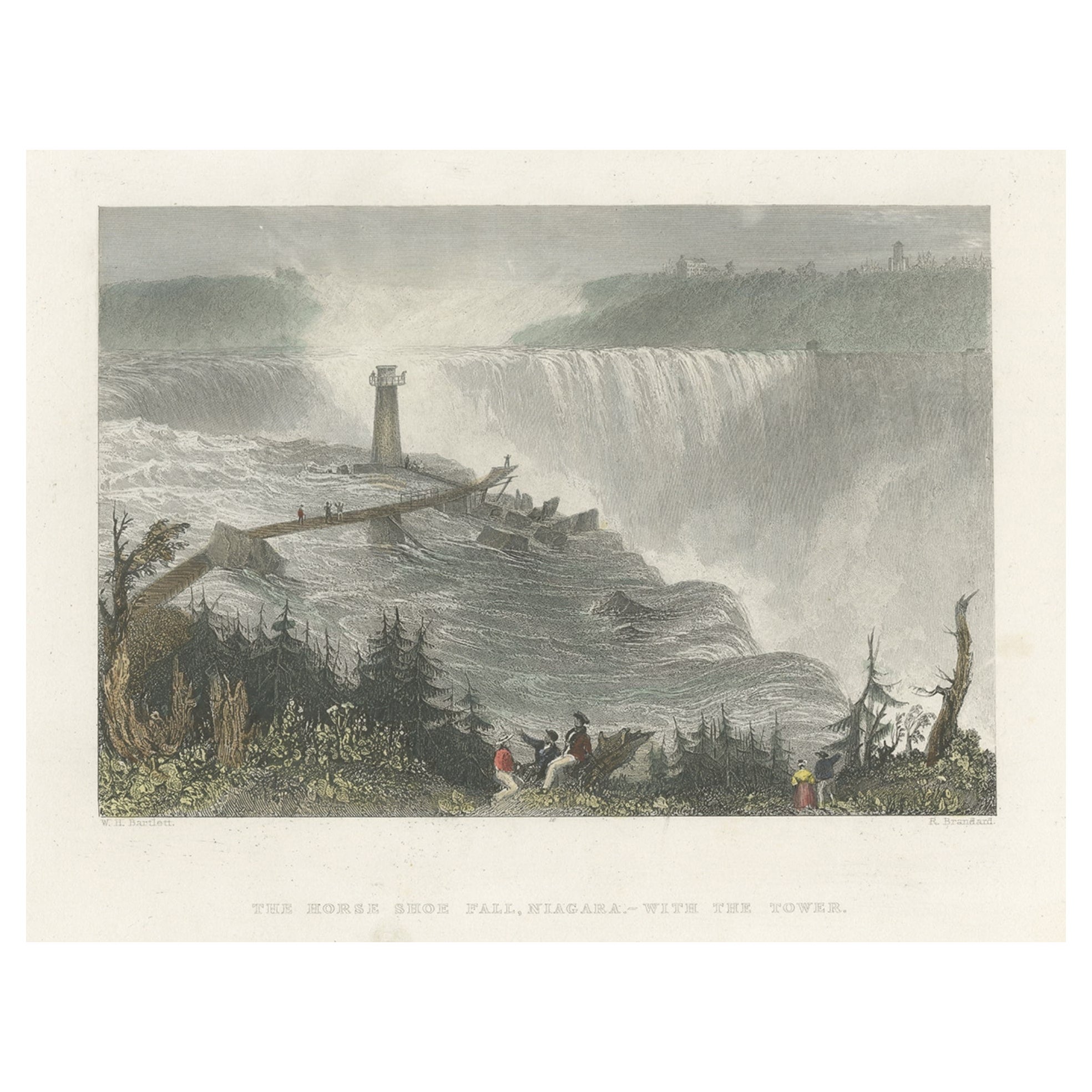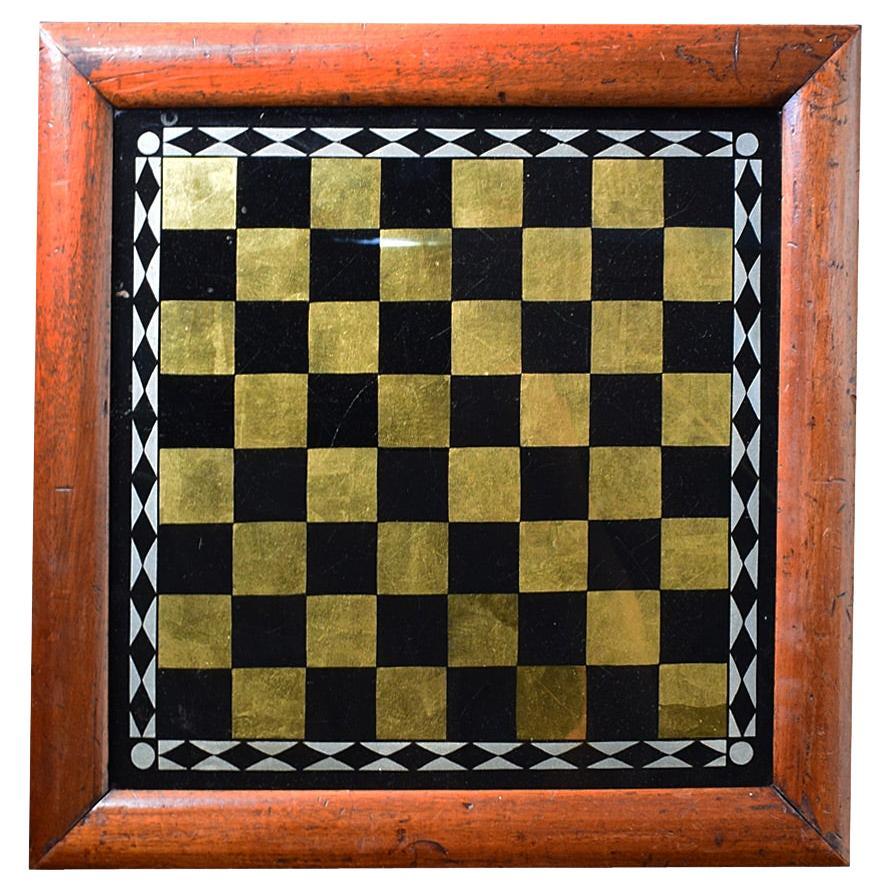Items Similar to 19th Century, Irish Marine Botany Specimens Made for the Niagara Falls Museum
Want more images or videos?
Request additional images or videos from the seller
1 of 6
19th Century, Irish Marine Botany Specimens Made for the Niagara Falls Museum
About the Item
19th century Irish Marine Botany Specimens made for Thomas Barnett of the Niagara Falls Museum. Seaweed samples were collected off the West Coast of Ireland in 1871 by Mrs. Maria J.W. Kirkwood and presented to Thomas Barnett Esquire, proprietor of the Niagara Falls Museum. These come as two separately framed pieces with hand embroidered lettering surrounded by seaweed and a poem written by Victoria Hall.
Free shipping within the United States and Canada.
The Niagara Falls Museum was a museum most notable for being the oldest Canadian museum (1827), as well as for having housed the mummy of Ramesses I for 140 years before its return to Egypt in 2003. It was founded by Thomas Barnett of Birmingham, England and underwent a few vocational changes in its history.
More on Thomas Barnett and the Niagara Falls Museum.
Thomas Barnett was born on December the 4th, 1799 near Birmingham, England. He moved to Canada in the early 1820s and opened the Niagara Falls Museum in 1827 at the base of the Canadian Horseshoe Falls. Barnett had a passion for collecting oddities. He retrofitted a former brewery house to exhibit his private collection. Although Barnett was aware of the collection patterns of his North American contemporaries, his own approach bore an uncanny similarity to the British tradition, such as the Ashmolean Museum in Oxford, the first traditional museum in Britain.
The Niagara Falls Museum had humble beginnings. In 1827, the first museum contained Thomas Barnett's own cabinet of taxidermic curiosities. Although the details were not documented, the collection was likely composed of a number of mounted animals of local origin, combined with a smattering of Native American artifacts. Barnett's collection however rapidly grew. Prior to 1844, an account of the museum's contents stated that there were over 5000 items, including bipeds, quadrupeds, birds, fish, insects, reptiles, shells, minerals, and Native American curiosities. Through the first fifty years of its existence, the Niagara Falls Museum continued to acquire similar artifacts through the diligent efforts of the Barnett family and their associates.
In 1854, Sydney Barnett (son of Thomas Barnett) made the first of his three trips to Egypt (two by himself and one with Dr. J. Douglas of Montreal) and purchased four mummies as well as a host of other Egyptian antiquities. In 1857, mastodon remains were discovered in St. Thomas, Ontario and later placed in the museum. In 1859 an inventory of the museum's contents included, in addition to the previously mentioned artifacts, an egg collection, ancient and modern coins, Japanese and Chinese relics. In 1873, the Barnetts purchased the remains of a large whale, the 40-ft magnificent humpback whale skeleton. Barnett and his son Sydney, who assisted with the Museum, were both accomplished taxidermists, preparing specimens for the museum as well as traded and sold to other institutions. Sydney Barnett, an army Colonel, was also a poet, writer, and inventor. With the growing popular fascination with the "Wild West," Sydney Barnett began organizing a Wild West Show and Grand Buffalo Hunt in 1872. He originally contacted "Buffalo Bill" Cody to feature lasso men and gathered over 100 Pottawatomie Indians for a large buffalo hunt. Problems arose when the US Government would not allow the Indians off the reservation. The show was then changed to feature General Custer's scout "Wild Bill" Hickock as master of ceremonies, assisted by local Woodland Indians of the Tuscarora and Cayuga Nations.
Following the transfer of ownership in 1878 to the Davis family, after an acrimonious decades-long rivalry with Buffalo's Saul Davis, the museum nevertheless survived. In 1882, the Niagara Parks Commission was formed to convert the front to the present Queen Victoria Park. This forced the museum to be relocated. In 1888, no suitable location could be found in Canada so it was relocated to Niagara Falls, New York. The Davis family established an Art Gallery in the museum in 1891. During the early years of their proprietorship, five more Egyptian mummies were purchased, along with the entire collection from the celebrated Wood's Museum of Chicago. While acquiring a few new exhibits, others were lost or disposed of over time. There were documented exchanges also, of artifacts and specimens between the Niagara Falls Museum and P.T. Barnum.
In 1892, the museum's living display came to an end because of complaints from area residents about the noises and the odors. A number of artifacts displayed in Buffalo at the Pan American Exposition of 1901 had been acquired by the Niagara Falls Museum. A giant Sequoia tree that was reportedly felled on the Eel River, Humboldt County, California, on February 14, 1893, was a highlight in the Forestry Building at the exposition. Its circumference was seventy-seven feet, making it one of the largest trees ever cut down in the world. Also given to the museum was a shell and coral collection gathered by Louis Agassiz of Harvard University. The exposition contained a wealth of artifacts, and although only the above artifacts have been documented there may be items in the museum's Eskimo, Oriental and South Sea Island display originating from the exposition.
Thomas Barnett, died in 1890 in Niagara Falls, Canada, founder of Canada's oldest museum, is considered Canada's first "Museum Man." The museum collection was owned by the Sherman family until May 1999 when the entire collection was purchased by private collector, William Jamieson of Toronto, whose hope was to revive the tradition Thomas Barnett started.
- Dimensions:Height: 27.5 in (69.85 cm)Width: 33.5 in (85.09 cm)Depth: 0.75 in (1.91 cm)
- Sold As:Set of 2
- Period:
- Date of Manufacture:1871
- Condition:There is some water damage on the bottom and a hole in the top of frame for hanging. Please see pictures.
- Seller Location:Hamilton, CA
- Reference Number:1stDibs: LU135522531942
About the Seller
5.0
Platinum Seller
These expertly vetted sellers are 1stDibs' most experienced sellers and are rated highest by our customers.
Established in 2010
1stDibs seller since 2015
1,216 sales on 1stDibs
Typical response time: <1 hour
- ShippingRetrieving quote...Ships From: Hamilton, Canada
- Return PolicyA return for this item may be initiated within 3 days of delivery.
More From This SellerView All
- 17th Century Nicolas Visscher Map of Southeastern EuropeLocated in Hamilton, OntarioA beautiful, highly detailed map of southeastern Europe by Nicolas Visscher. Includes regions of Northern Italy (showing the cities Bologna, Padua, and Venice), Bohemia, Austria (sho...Category
Antique 17th Century Dutch Maps
MaterialsPaper
- 19th Century, Reliquary Saints RelicsLocated in Hamilton, Ontario1860's Saints Relics 2" long x 1.5" wide x .25" deep.Category
Antique 1860s Victorian Religious Items
MaterialsMetal, Gold, Enamel
- 19th Century African Shona DaggerLocated in Hamilton, Ontario19th Century dagger from the Shona people of Zimbabwe. It features beautiful carvings, a rich aged patina and a handmade steeped blade.Category
Antique 1890s Zimbabwean Arms, Armor and Weapons
MaterialsMetal
- Mid-Century Royal Trust Company Framed Wall Plaque with Indigenous ChiefLocated in Hamilton, OntarioThis wall plaque is unsigned with respect to the maker, but it is presumed to have been made in Canada in approximately 1950 in a traditional style. The plaque is composed of a very ...Category
Mid-20th Century Canadian American Classical Decorative Art
MaterialsSpelter
- 19th Century Italian Bronze Church Door Panel "Stations of the Cross" OrtiseiLocated in Hamilton, OntarioThis 19th century Italian bronze panel is a section from a church door in Italy. This religious icon is a depiction of the "Stations of the Cross". It was produced from the now defun...Category
Antique 19th Century Italian Classical Roman Wall-mounted Sculptures
MaterialsBronze
- Early 19th Century Hand Colored Map of the United States and Caribbean IslandsLocated in Hamilton, OntarioHand coloured early 19th century map by Giraldon of France titled "Etats Unis et Grandes Antilles" (United States and Greater Antilles).Category
Antique Early 19th Century French Maps
MaterialsPaper
You May Also Like
- 19th Century Italian Marble Plaque of George Slaying the Dragon, C.1870Located in Royal Tunbridge Wells, KentAntique 19th Century Italian Grand Tour marble relief depicting St George slaying the Dragon. England has always been one of the leading countries in terms of travelling and explori...Category
Antique 19th Century Italian Grand Tour Historical Memorabilia
MaterialsMarble
- Specimen Marble Top, 19th CenturyLocated in Saint-Ouen, FRSpecimen marble top. 19th century.Category
Antique Early 19th Century French Decorative Art
MaterialsMarble
- Important German Tabernacle Museum Piece 16th-17th CenturyLocated in Madrid, ESImportant German Tabernacle Museum Piece 16th-17th century IMPORTANT GERMAN TABERNACLE IN MUSEUM 16TH-17TH CENTURY EXCEPTIONAL SOUTHERN GERMAN TABERNACLE...Category
Antique 16th Century Religious Items
MaterialsFruitwood
- Antique Print of Horseshoe Falls or Canadian Falls 'Niagara Falls', 1840Located in Langweer, NLDescription: Antique print titled 'The Horse shoe fall. Niagara - with the tower'. Steel engraving of the Horseshoe falls or Canadian falls. Artists and Engravers: Engraved by R. Brandard after W.H. Bartlett. Published for the Proprietors by Geo. Virtue. Horseshoe Falls, also known as Canadian Falls, is the largest of the three waterfalls that collectively form Niagara Falls on the Niagara River along the Canada–United States border. Approximately 90% of the Niagara River, after diversions for hydropower generation, flows over Horseshoe Falls. The remaining 10% flows over American Falls and Bridal Veil Falls...Category
Antique 1840s Prints
MaterialsPaper
- 19th Century Reverse Painted Glass Games BoardLocated in London, GB19th Century reverse painted glass games board We share what we love, and we love the decorative nature of this stunning English 19th Century reverse painted glass games board. With aged surface across the glass reflection and wooden frame. With a glance of old news paper...Category
Antique Late 19th Century British Early Victorian Games
MaterialsGlass
- Russian Icon with Processional Cross 19th CenturyLocated in Brussels, BrusselsVery beautiful Russian icon with a processional cross in its center from the 17th century We can see that the icon was created to accommodate the processional cross with the Chris...Category
Antique 19th Century Belarusian Aesthetic Movement Religious Items
MaterialsWood
Recently Viewed
View AllMore Ways To Browse
Manning Of Ireland
Antique Chinese Wall Art
Antique Japanese Wall Art
Egypt Wall Art
Wall Coin
Irish Chinese
The Woodlands Used Furniture
Large Japanese Wall Art
Art Organizer
Indian Museum
From The Antique Poem
Large Antique Wall Cabinet
Thomas Irish
Wall Woodland
Men Marines
Used Furniture Ontario Canada
Antique Wall Mounted Cabinet
Wall Mounted Antique Cabinet




